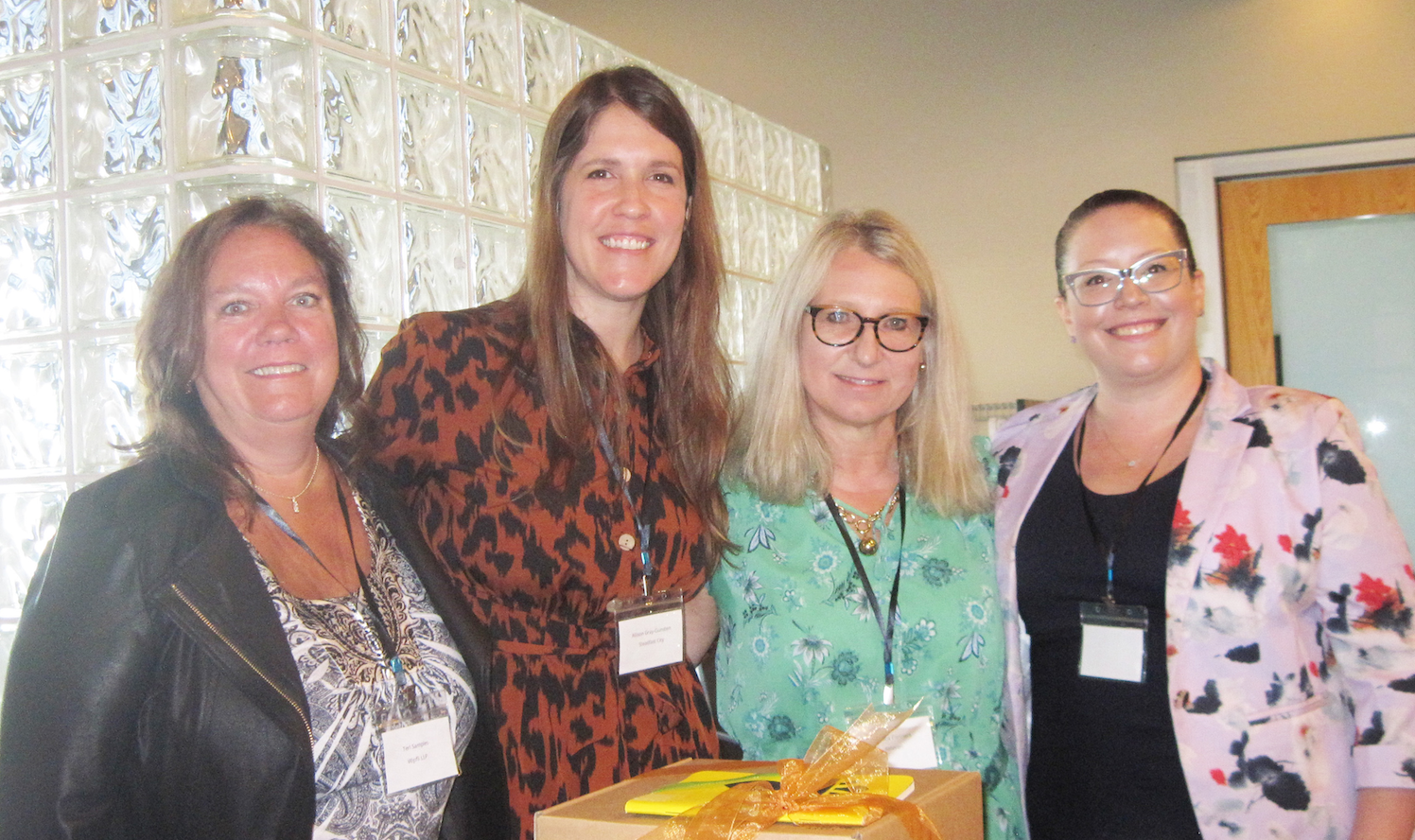Commercial real estate professionals have the opportunity to benefit from a wide and expanding world of tax credits and utility incentives, according to panelists at a June 14 event addressing economic incentives, co-hosted by Commercial Real Estate Women (CREW)-STL and the St. Louis chapter of the Urban Land Institute (ULI) at the Edge at Webster in Webster Groves, Mo.
Teri Samples, CPA, partner, Wipfli, moderated the session, with input from Allison Gray-Gunsten, vice president and Midwest Region leader, Steadfast City Economic and Community Partners; Monica Conners, CEcD, business development executive, Ameren Missouri; and Sarah Luem, shareholder, Capes Sokol.
“Tax incentives are a completely different language,” Gray-Gunsten noted. “They’re all about stimulating economic growth, often to assist low-income and underserved communities, with some focused on job creation.”
Among the federal opportunities of interest to CRE developers are the New Markets, Low-Income Housing and Historic Tax Credit programs.
The New Markets Tax Credit (NMTC) aims to stimulate private developments in underserved areas, with a 39 percent credit over a seven-year period, Gray-Gunsten said. “These are awarded through community development organizations, and capital can go directly into projects.”
Conners noted that NMTCs are “a niche for smaller businesses in distressed areas.”
Low-Income Housing Tax Credits support the development of affordable and rental homes. The federal government gives these to U.S. states and territories to give to developers, who can claim such credits for 10 to 15 years and often must provide affordable rents for up to 30 years.
The Historic Tax Credit provides 20 percent for projects that involve restoring or renovating historic buildings.
Such programs are “drivers for economic development, and the state legislative session has been really great from an incentive standpoint,” Conners said. Missouri recently enacted a 10 percent tax credit for research and training in technology that she said will be “a game-changer for startups.”
Tax credits also can be monetized through programs such as Missouri Works, which provides refunds.
“A big change coming this year should be opportunity zones,” Luem said. “Developers who invest in those areas get certain benefits, such as deferring gains and a 5 percent step up in basis. The Missouri legislature introduced a law in April 2022 to correct issues and extend some benefits through 2028, as well as decrease time for step-ups. It will allow changes to the structure for how to invest, through a fund within fund.” Luem expects the bill to be passed.
Luem warned developers that some zones will be “sun-setted” (removed from the program) based on the 2020 Census, so it’s important to be aware of the status of where a client or developer wants to build or invest.
“Some might be grandfathered in if they were registered before the bill is passed,” she said. Student populations are expected to be discontinued as an element in defining opportunity zones.
A $1 billion community dynamism fund based on unemployment rates also should provide a chance to take advantage of incentives as long as developers plan ahead.
The panelists agreed that developers considering taking advantage of various tax credits and other incentives should plan for them as early in their process as possible, especially because some programs would not be accessible after a project has begun.
“A lot of these processes take time,” Gray-Gunsten said. “They aren’t quick or easy.”
“You need to satisfy the ‘but for’ clauses,” Conners said. “Job-one is forward planning so you can study incentives and get the team together at the front end of a development project.”
That team should include experts in the laws affecting and programs available to developers — speakers got a good laugh from the audience when they agreed that consultants and lawyers are essential to obtaining and making the most of various incentives for commercial projects.
“I was most surprised to find that not all funding works well together,” Gray-Gunsten said. “You have to hire your lawyers and accountants early.”
Luem agreed that the complicated nature of the process was a surprise.
“It’s important to have consultants involved to help you identify the best options and guide the legal team,” she said.
Among the other advantages available for commercial projects is a utility incentive from Ameren that can be used in combination with other programs, Conners said.
“Utility companies have efficiency programs with real money in them — cash rebates.”
Luem noted that St. Louis City and County both set mandates in January 2022 for installing charging stations for electric vehicles, but that a statute is underway in the county to “unwind” some aspects of ordinances in that area.
“The goal is to prepare for a future when we have a lot of electric vehicles by [setting up these resources] when it’s the cheapest to do — in the construction process.”
Various incentive programs for energy efficiency can be “layered” together for greater benefits.
Developers should keep in mind that tax credits and other incentive programs can be applied to projects of all sizes.
“It’s a misconception that only large companies can use these incentives,” Conners said. “Small businesses can also take advantage of such programs.”
While not necessarily specific to incentive opportunities, the panelists noted that factors at work in the current environment include an accelerated rate of speed to market for projects, the importance of having commercial or industrial sites “ready to go” as soon as clients are available, the viability of medium-sized sites as well as the “giant, mega sites” being sought by many clients, the value of early due diligence and streamlined processes, and the role of automation in project design even though training workers remains important.
Younger clients and tenants, panelists agreed, are focusing on diversity and environmental-social-governance (ESG) aspects of new projects.
_______________________________________
Feature photo: Feature photo: Teri Samples, Alison Gray-Gunsten, Monica Conners and Sarah Luem (left to right) at CREW-STL/ULI event in June. Photo credit: MetroWire Media STL.

